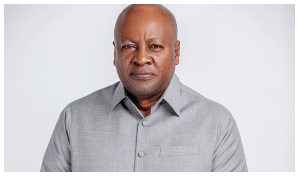More than half of the Kenyan population is below the age of 35 years, with the age distribution between male and female genders averagely equal.
According to the census population report by socio-economic characteristics, there is still a high dependency rate in the country as those between the ages of zero and 14 form the bulk with 18.8 million contributing to 38 per cent.
AGE DISTRIBUTION
However, there are interesting differences in the age distribution between rural and urban populations.
In urban areas, the majority of the population is between the ages of 20 and 34 years, with a median age of 20 to 24 years while in rural areas, the majority are between the ages of 5 and 19, with a median age of 10 and 14 years.
The number of people below the age of 35 in rural areas is about 24.2 million as compared to 10.8 million in urban areas. Out of the 24.2 million in rural areas, about 17.8 are below the age of 20 compared to about 6 million under 20 years in urban areas.
The average Kenyan has attained primary and secondary levels of education, with a few proceeding to university.
The statistics from KNBS show that 37.9 percent of the population at 17.8 million people are currently at a learning institution, with only 417,000 at universities.
UNIVERSITY EDUCATION
Only 1.3 million Kenyans have a university education, which is only 2.8 per cent of the total population compared to more than 16.4 million who are in pre-primary, primary and secondary schools.
Despite the education levels in the country, almost half of the population (22.3 million people) is economically active.
Data shows that the working population is about 19.7 million while those actively searching for work is about 2.6 million people.
On a national overview, there seems to be a balance in gender in the working population as females accounted for 50.2 percent of the total working population.
This figure, however, differs slightly in urban areas as about 50.4 per cent of men reported to be working as compared to 40.6 per cent of women. The data further showed that more than 18 million people were outside the labour force.
ENGINEERING
Business, Engineering, and Education remain the most common education training that a majority in the labour market have. Those who have studied business were about 779,000 while those who have training in Engineering and Education were 364,600 and 740,000 respectively.
Computer Science and Agriculture-related training are also common as well as courses related to Biology, Law, Economics and Journalism. Professions relating to Geography, Earth Sciences, Physics, Chemistry and Astronomy were less common.
The average Kenya also owns a home. Data shows that more than half of Kenyans (61.3 per cent) own the home they live in as compared to 38.7 per cent of those living in rented houses.
This is, however, dependent on the area one lives as more Kenyans in rural areas own homes as compared to those in urban areas.
About 6.3 million people in rural areas own homes, out of which only 104,000 purchased the house. With a look at urban areas, only about 992,000 in own homes with slightly above 100,000 saying they purchased their home.
SANITATION
Water and sanitation is still and issue as only 34 per cent of Kenyan household rely on piped water and more than half (51.2 per cent) use covered pit latrine as a sanitation facility.
A majority of Kenyans, particularly in rural areas, primarily use firewood as cooking fuel at 55.1 percent. This is followed by the use of Liquefied Petroleum Gas (LPG) at 23.9 percent.
The average Kenyan is a Christian as more than 85 per cent of the population belong to this religious group. Within the Christian religion, a majority are Protestants at 33.4 percent, followed by Catholics at 20.6 percent and Evangelists at 20.4 percent.
There are about 5.1 million Muslims in the country, comprising of 11 per cent of the population while 755,000 people were Atheists and another 60,000 were Hindus.
The average Kenyan also owns a mobile phone and a significant number of households own a television set. More than 20 million people above the age of 3 own a mobile phone, with data showing that 22.6 per cent and 10.4 per cent of the same population group have used the internet and computer respectively.
Click to view details



Africa News of Monday, 24 February 2020
Source: nation.co.ke

















